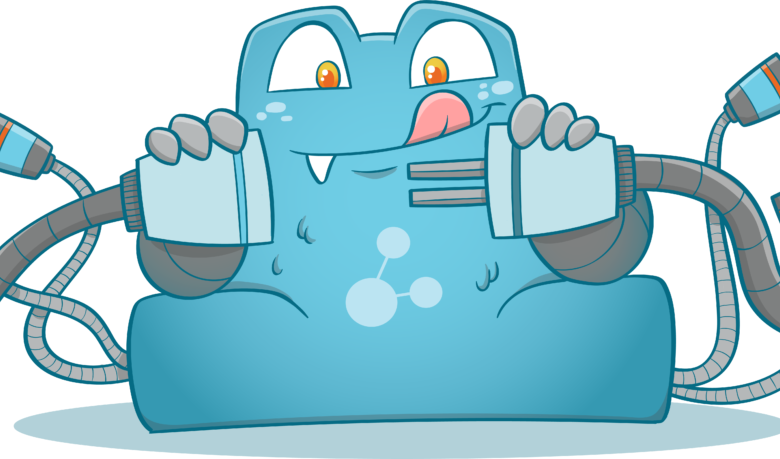6 Reasons Why Internal Linking Is Good For SEO

A lot of things will come to our mind if we think about SEO strategy. One of which is internal linking. Internal links are small but formidable, basic yet complicated, and they assist people to navigate through your digital material while also providing search engine crawlers with information about how your website functions.
Here let’s understand what is internal linking and why they matter
What is internal linking?
An internal link is a type of hyperlink on a web page to another page or resource, such as text (anchor text), image, or document, on the same website or domain.
An internal link is a hyperlink that allows navigation from one page in a website to another. Although mostly used for navigational purposes in a website, internal links help the readers in accessing more information via related articles or pages. Internal links not only play an important part in navigation inside the website but also help in increasing page views and internal page rank.
Internal linking should be used to connect any website with more than one page. What also makes internal linking structure critical for SEO is that it develops a site architecture and boosts your link equity. By allowing search engine crawlers to index more content, having several web pages tied to a single domain boosts your chances of being ranked.
Internal linking is also a vital aspect of your user experience because it allows consumers to access relevant content or find what they’re looking for more quickly, reducing dwell time.
Undeniable Reasons You Need Help With Statistics To Secure Good Grades
6 Reasons Why Internal Linking Is Good For SEO
We all know that Internal linking is one of the most powerful SEO strategies. Even if the algorithm is complex, there are still basic tweaks you can make to improve your SEO immediately without cheating the search engines.
One of them is internal linking. It’s not a scheme or a trick, and it’s not difficult to pull off.
-
Internal Linking Spreads the Strength of the Site to Internal Pages
When a link to your homepage is received, some of the link value is passed on to internal pages. “Link juice” is a term used to describe this.
When Page 1 links to Page 2, “link juice” travels from Page 1 to Page 2, assisting Page 2 in ranking higher in the search engine results page (SERP). The better a website’s general structure (via internal linking) is, the better it will do in search.
-
Internal Linking with Optimized Anchor Text Is Good for SEO
An internal link is a simple HTML string that connects two pages on a website. It appears as follows: <A HREF = “http://www.example.com/internalpage“> an article on cat food </A>
However, when you build an internal link with anchor text rather than an image or navigational text, the internal link’s value increases.
Anchor text adds keywords and substance to the linking process, increasing the link’s value. An A HREF tag isn’t the only thing Google looks at. They’re also taking a look at the anchor text in the link.
Anchor text keyword stuffing is a thing of the past. Internal anchor text optimization, on the other hand, has merit. It’s preferable to use anchor text that blends in with the rest of the content rather than over-optimized anchor text.
Anchor text matters greatly to SEO, as it can indicate to Google what a page is about. In fact, using anchor text as a ranking signal is included in several Google patents. Not using anchor text or using generic anchor text, such as “click here” is generally considered a poor SEO practice.
-
Increases Backlink-Earning Potential of Deep Content Pages
Examine the sources of the majority of your website’s backlinks. You’ll most likely see a number of links that lead to your homepage.
Unfortunately, having too many hyperlinks on your main page is terrible for SEO. Over-optimizing is what we call it, and it should be avoided.
The reversed pie chart is what you want to see. Not your home page, but deep interior pages should be the focus of the majority of your external links. This is because the homepage rarely contains the type of specific information that users want.
By building obvious click routes and indexation throughout the website, you may increase the link juice earning potential of internal pages by creating a strong internal linking structure.
Why? Because you’re improving the total crawl priority of your site by better distributing your links, you’re boosting the overall crawl priority.
-
Helps Google Index Your Site
To identify and index webpages, Google’s crawler follows link routes across the internet. The Google crawler will have an easier time finding new information if your website has strong internal links.
Google’s bots scour the web for new information on a regular basis. Crawling is faster if your material is intertwined with several internal connections.
As a result, your material will be indexed more quickly as well. Improved crawling and indexing can help you rank higher in search engines.
Google’s bots scour the web for new information on a regular basis. Crawling is faster if your material is intertwined with several internal connections. As a result, your material will be indexed more quickly as well. Improved crawling and indexing can help you rank higher in search engines.
-
It Provides Value to Your Users
This is the most crucial point of them all. Yes, internal linking is an SEO strategy. But there’s more to it than that. Internal linking is, in the end, beneficial to users.
Consider this: When you’re studying a topic, do you use one or numerous sources?
Do you like to look for additional information that will help you better comprehend the subject? Perhaps you simply enjoy the writing style of the article you’re reading and would like to read more by the same author.
Internal linking on a website boosts the value of each piece of content by substantiating assertions and directing users to relevant content. It has a purpose within the marketing funnel—carrying users to the desired destination—while it may not immediately generate conversions.
Internal linking has the extra benefit of assisting readers in staying on your site longer and increasing their trust in you.
Not just technical modifications and cunning methods, but user optimization is at the heart of SEO.
-
Internal linking improves time on site
Linking to relevant content might help you keep visitors on your site longer and reduce bounce rates. The term “bounce rate” refers to a visitor that only stays on your website for one page and then leaves.
If the material you’re internally linking to has real value, you can keep visitors on your site longer and lower bounce rates. You’ll need to connect to Google Analytics to track your bounce rate.
The bounce rate is an important metric to monitor because it has a significant impact on your search engine rankings. Indeed, the bounce rate is tied to a portion of the usage factors used in the Panda Updates, therefore boosting your UX by delivering interesting content on your website can put you ahead of the game if you want to be Panda proof.
12 good reasons to call on a wedding planner
Key Takeaway
Remember it’s about creating the best experience for your users, being present throughout the funnel, and making sure search engines see your value as much as users do. A strategic approach to internal linking can help you accomplish those goals while amplifying efficiencies to boost your results.
Internal linking can help your overall SEO performance in a variety of ways, including usability and link juice. A winning strategy is to have a solid internal architecture. Now that you’ve obtained the primary keys, it’s time to optimize your own!




